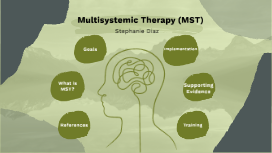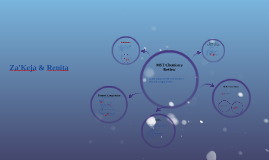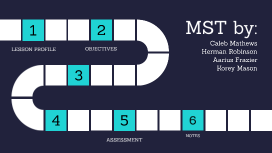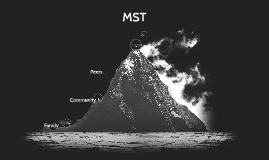MST
Transcript: Multisystemic Therapy (MST) Stephanie Diaz What is MST? What is it? Family and community based treatment method Aimed at youth ages 12-17 who are at risk of an out of home placement due to antisocial and/or delinquent behaviors Focuses on adolescent and caregiver Goals Goals of MST 1. Effectively reduce youth's problematic behavior(s) 2. Empower caregivers Implementation - Team-based - Outside consultant, supervisor, clinical team of 2-4 therapists - Weekly team and individual supervision Treatment Details - Most convenient for the adolescent and their family - 3-5 months - Intensity varies, typically begins with 90 minute daily, biweekly or weekly sessions, eventually tapering - 24/7 staffed hotline Over 65 Research Studies (10+ RCT) - lower rates of re-arrest* - improved family cohesion - improved peer relationships - decrease in drug use - decrease in time spent in out of home treatment - increased functionality (in school, work & community) *as compared to IT Supporting Evidence Impact - 15 Countries - 34 states - over 2500 clinicians and - over 200,000 youth served Training 5 day training weekly consultation with outside expert quarterly booster trainings Training MST manual Providers in Pennsylvania - Public Health Management Corporation - Family Services of Northwest PA - K/S MST - Community Soluntions Inc. - Adelphoi Village - Hempfield Behavioral Health - Pennsylvania Counseling Services References CEBC. (2020). Retrieved August 16, 2020, from https://www.cebc4cw.org/program/multisystemic-therapy/ Evidence Based Programs. (2020). Retrieved August 16, 2020, from https://evidencebasedprograms.org/ Henggeler, S. W. (1999). Multisystemic Therapy: An Overview of Clinical Procedures, Outcomes, and Policy Implications. Child Psychology and Psychiatry Review,4(1), 2-10. doi:10.1017/s1360641798001786 Huey, S. J., Henggeler, S. W., Brondino, M. J., & Pickrel, S. G. (2000). Mechanisms of change in multisystemic therapy: Reducing delinquent behavior through therapist adherence and improved family and peer functioning. Journal of Consulting and Clinical Psychology,68(3), 451-467. doi:10.1037/0022-006x.68.3.451 MST Services: Multisystemic Therapy for Juveniles. (2017). Retrieved August 16, 2020, from https://www.mstservices.com/ Welcome to EPIS. (2015). Retrieved August 16, 2020, from http:// www.episcenter.psu.edu/

















